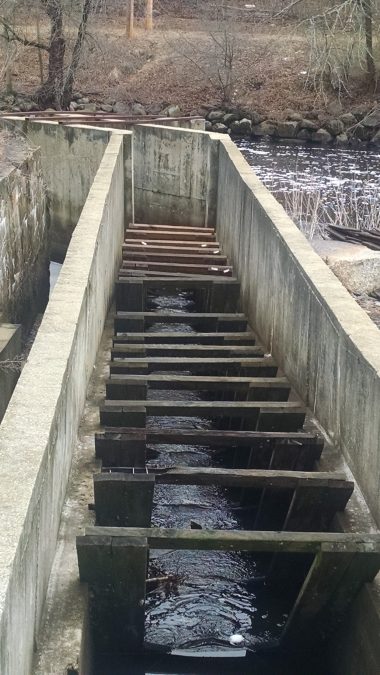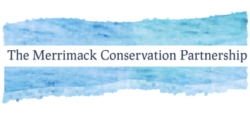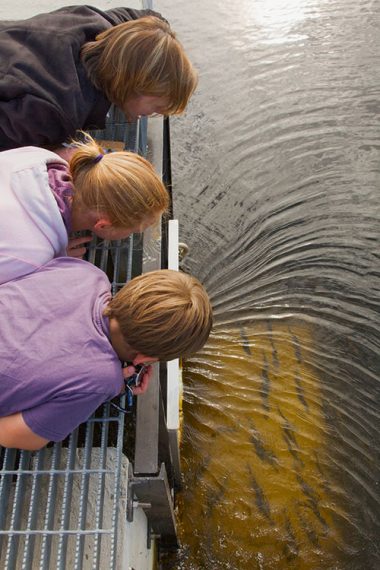
Volunteers Needed to Monitor Herring on the Concord River
We all are attracted to the larger animals in the ocean. Kids are especially drawn to the whales, sharks, and seals. These more charismatic species play an important role in our ocean ecosystem, but they are part of the food chain and rely on their prey, the smaller “forage” fish [video], to survive.
River herring, which spawn in our local rivers, are an important forage fish in our oceans. Studying these forage fish helps us determine the health of our river systems, where they spawn, as well as the larger ocean ecosystem.
Lowell is at the confluence of the Concord and Merrimack Rivers. Here, we have a unique opportunity to monitor river herring at the Centennial Island Fish Ladder. There are two types of river herring: blueback and alewife. In our watershed, we tend to see more of the alewives (vs. blueback herring). INFOGRAPHIC (en español)
Herring travel upstream from the ocean to their spawning grounds in our rivers and streams. Once they reach Lawrence, they are lifted up over the Essex Dam via a fish elevator where they are counted.

The view from the fish ladder is of Wamesit Falls, the Concord River Greenway, and above that, the Lowell Cemetery.
Once the fish reach Lowell, they will either continue traveling up the Merrimack or head south into the Concord River, attempting to reach the upper reaches of the Sudbury-Assabet-Concord (SuAsCo) River Watershed.
As the fish pass through Lowell, they must first get over the Middlesex Dam (near Lower Locks and Middlesex Community College), then over Wamesit Falls (or Centennial Dam). If these passages are successful, they will reach the Talbot Mills Dam in Billerica which has no access for fish passage.
By monitoring the passage of herring and other species in Lowell, we can get a better understanding of what kind of modifications are needed to allow for upstream fish passage at the Talbot Mills Dam in Billerica.
Opening up fish passage at the Billerica Dam will allow fish to access the entire SuAsCo Watershed – and the largest acreage of fish habitat in all of New England.
Volunteers needed:
Volunteers are needed to monitor fish each spring (approximately early-May to mid-June), based on recent river herring counts in Lawrence.
We need you to help us count the fish at the Centennial Island fish ladder, off Lawrence Street in Lowell. We need volunteers to conduct 10-minute fish counts (randomly, during a one-hour time slot).
Please email us if you are interested in helping out in person at the ladder. The schedule (below) will be updated by staff as we get volunteers for time slots. We’re looking for one person to come anytime during each one-hour time slot (7am-7pm).



















